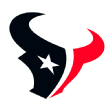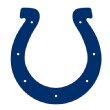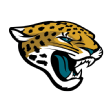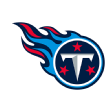It's time to reflect on the 2017 offseason. There are a few stray veterans left in the free-agent pool, and teams could still execute something unexpected if injuries arise, but organizations have mostly closed their checkbooks and built the rosters they will take onto the field in September.
Of course, we can know only so much right now. This time last year, there was no way anybody knew that the Cowboys had drafted a franchise quarterback. Kyle Shanahan was lucky to survive the offseason in Atlanta as an offensive coordinator, let alone be considering head-coaching roles.
At the same time, we can look at what each team's goals were (or should have been) heading into March and gain a sense of whether they did enough to address those concerns. In most cases, we also can plot what they have to do before hitting Week 1.
I'm tackling these grades division-by-division (see above for the ones I've already done). Today, let's head to the AFC South, where the favorites might be the team that stayed most similar to its 2016 self this offseason.
To go directly to your favorite team, click the link below:
Texans | Colts | Jaguars | Titans

Houston Texans
What went right
They found a way out of a dead-end quarterback situation. Credit to Texans general manager Rick Smith for getting creative: The Brock Osweiler signing worked out as poorly as it could have, but the Texans found a way out of their predicament. If I faulted the Browns for paying $11 million or so for a second-round pick, I have to also give the Texans credit for selling that same second-round pick for $16 million in cash.
I'm less enthused about the trade-up for Deshaun Watson, but he's the best-pedigreed quarterback Bill O'Brien has had a chance to groom in Houston. It will cost the Texans next year, as they will be shipping their first- and second-round picks to Cleveland, but that was the cost of hope for a team expected to be competitive in 2017.
I was more critical of the Bears for this sort of approach, but the Texans aren't in the same situation. While the Texans aren't much better of a team in a vacuum -- the Bears actually topped them in DVOA last season -- the Texans are getting J.J. Watt back after he basically missed the 2016 season, and Houston plays in a far easier division than Chicago. Even if the Texans regress in close games, improved quarterback play might be enough to keep them at 9-7, which could win the South.
What went wrong
It shouldn't have been that hard to upgrade at quarterback. The Texans didn't need to trade up for Watson to have a viable passer. Jay Cutler and Tony Romo were both available for free -- and Houston could have used the money it saved on Osweiler to sign either -- but it didn't seem to go after the QBs very hard. Either probably would have been an upgrade on Watson, and they are almost definitely better than Tom Savage, who wasn't good enough to fend off a cavalcade of mediocre quarterbacks in years past.
They didn't come to terms on an extension with WR DeAndre Hopkins. This is the most pressing contract coming due for the Texans. Hopkins had a disappointing campaign in 2016, although the play of his quarterbacks deserves the majority of the blame. It could give Houston an opportunity to buy low on its No. 1 wideout, who is entering the fifth-year option of his rookie deal at $7.9 million.
Hopkins might be the best wideout in a free-agent class that could include Julian Edelman, Sammy Watkins, Alshon Jeffery, Jordan Matthews, Jarvis Landry and John Brown. If the Texans don't pay him, somebody will. The other first-round wideout from Hopkins' draft class to get an extension is Tavon Austin, who picked up $21.6 million in guarantees and $29.6 million during the first three seasons of his ill-fated deal with the Rams. Hopkins will naturally want to top that and look much closer at the deal A.J. Green signed with the Bengals in 2015, which was worth $46.9 million over its first three years. There's a huge gap between those two figures, which is what makes this a difficult negotiation.
The Texans didn't do much to upgrade on special teams. The always excellent Stephanie Stradley pointed out to me that the Texans have been bad on special teams for a long time, ranking 28th or worse in special teams DVOA during each of the past five seasons, including dead last in 2012, 2015 and 2016. Special teams tends to vary more than offense and defense from year to year, which makes this even more remarkable.
Fixing Houston's special teams isn't as simple as swapping out its specialists, but when you're this bad for this long, it might be worth a shot. Houston comfortably had the league's worst kickoff unit last season, in part because Nick Novak turned just 31.1 percent of his kickoffs into touchbacks, the lowest rate of any regular in the league by a wide margin. Novak was also the league's seventh-worst kicker on scoring plays. The Texans responded by giving him a one-year, $1.2 million deal. Shane Lechler, who helmed the league's third-worst punt unit, picked up a one-year, $2 million contract. Three of their core four special-teamers -- the guys who played more than 50 percent of Houston's special teams snaps -- also return. It would seem like the Texans would get better by virtue of the dead cat bounce, but if they haven't by now...
What's next?
Send Tony Romo their playbook. Just in case.
Grade: C+


Indianapolis Colts
What went right
Jim Irsay fired Ryan Grigson and replaced him with Chris Ballard. It's hard to think of an NFL general manager who did less with more than Grigson, who had Andrew Luck fall into his lap with the first pick in his first draft and spent most of the next five years putting obstacles in the QB's way. Grigson had a solid 2012 draft after Luck, but then struggled mightily in the years to come while mostly striking out in free agency. With an ailing Luck missing time in 2015 and 2016, the Colts fell far enough for Grigson to lose his job.
Ballard, his replacement, spent time in a pair of successful organizations by working with the Brian Urlacher-era Bears before joining John Dorsey as he revitalized Kansas City's roster. That alone isn't enough to prove Ballard will succeed -- Grigson, after all, won a Super Bowl as a scout in St. Louis before enjoying years of success with the Eagles -- but Ballard's first offseason with the team has been very promising, both in terms of attacking weaknesses and identifying value within the market.
Ballard bought in bulk to shore up the defense. After years of neglect and poor drafting, the Colts sadly aren't one star player away from turning things around. They gave tons of snaps to replacement-level talent during the past few years, a combination of mid-to-late round picks forced into meaningful roles along with big-name free agents who failed to live up to expectations.
In his first offseason with the team, Ballard rightfully took the quantity approach to shoring up the league's fourth-worst defense per DVOA from a year ago. He targeted useful rotation players from other teams and came away with shockingly good deals, especially given how desperate teams were to acquire pass-rushers and defensive pieces.
Take Jabaal Sheard, who was a three-year starter in Cleveland before playing as a solid rotation end for the Patriots after Chandler Jones left last year. Sheard recorded 13 sacks in two seasons with the Pats and picked up a three-year, $25 million deal to join Indy. Compare his deal to the three-year, $27 million contract handed out to Miami's Andre Branch, who spent four years as a relatively anonymous piece in Jacksonville before putting together a competent half-season playing alongside two superstars in Ndamukong Suh and Cameron Wake last year. The last time Sheard hit the market (2015), the Patriots thought he was worth $5.5 million per year. The last time Branch hit the market, the league thought he was worth half that.
Of course, there's more to the deal than the average annual numbers. Sheard's deal has $9.9 million in real guarantees, all of which comes in 2017; if Sheard disappoints away from the halo of Bill Belichick, the Colts have the flexibility to get out. Branch, meanwhile, has nearly twice as much -- $16.8 million -- guaranteed in his deal, despite a much shorter track record as a pro. Indy ended up with the better player and more flexibility at a fraction of the cost. That's the difference between a well-run organization and one throwing money at flashes in the pan who it hopes are multiyear solutions.
Sheard isn't the only one. John Simon, who was very effective as a third edge rusher in Houston, came on board for a three-year deal with just $5.5 million in guarantees, again all in Year 1. Barkevious Mingo and Sean Spence are linebackers who could be useful if spotted in modest roles while contributing on special teams. Even Johnathan Hankins, the team's biggest free-agent signing, is on a three-year, $27 million deal with $10 million guaranteed, all coming this year.
The Colts have brought in a ton of young, short-term defensive help with upside in what will be an evaluation year. Grigson made some moves like this early in his tenure with Indy, targeting players like Greg Toler and Ricky Jean-Francois, but they were on far larger deals and expected to be long-term starters at their positions. With the sort of contracts Ballard is handing out, the guys who stick will be under contract for a couple of more seasons, while the ones who don't will be giving way to a more sustainable defensive model.
The emphasis on defense was even stronger during the draft. The Colts added extra fourth- and fifth-round picks by dealing Dwayne Allen (and a sixth-round pick) before trading down with the 49ers during the draft. Indy ended up with eight selections, all of which came among the top 161 picks. Outside of the pick haul Grigson inherited before his first season on the job, his four previous drafts produced a total of just 17 selections among those top 161 picks. There's no specific meaning to having a top-161 pick, but the point still stands: Ballard added picks that weren't meaningless seventh-rounders.
Using Chase Stuart's draft chart and including the draft picks traded for Trent Richardson and Vontae Davis, Grigson used nearly twice as much of his draft capital on offense (141.6 points) as he did on defense (73.2 points). Even if you take out Luck, it's still 107 points on offense to 73.2 points of defense. Grigson invested in free-agent defenders, but it's still a problem.
In his first draft, Ballard invested nearly four times as much of his draft capital in defenders (24.5 points) as he did on offensive players (6.3 points). Indianapolis' top three picks were all defenders, led by safety Malik Hooker, who fell to the Colts at 15 after most mock drafts had him going in the top 10. Six of Indy's eight selections were on the defensive side, and the other two were at positions of need along the offensive line and at running back.
No draft strategy is foolproof. These guys may not work out. Chuck Pagano hasn't done a great job of bringing along young defensive talent in Indy, and this new batch of defenders could fall victim to the same fate. As a coherent plan, though, what Indianapolis did this offseason made a ton of sense.
What went wrong
The offensive line still needs work. I'm not just cutting and pasting this from years past, although I could have done so. Outside of signing Titans backup Brian Schwenke and drafting 6-foot-8 Southern California behemoth Zach Banner as a run-blocking project in the fourth round, the Colts are running things back with the same offensive line. That group hasn't been very effective, although it's still a young line. This wasn't a great draft for offensive linemen, and the cost of signing linemen in free agency was exorbitant this offseason, but the Colts may regret not making one big splash to upgrade the right side in front of Luck.
What's next?
Look into help at inside linebacker. The Colts are still pretty thin on the interior, where undrafted free agent Edwin Jackson was thrust into the lineup last year. Sean Spence could figure into a starting role, but there are possibilities still available in the free-agent market. Daryl Smith hasn't slipped all that much and started 11 games as a strong-side linebacker for the Bucs last year. DeAndre Levy was a superstar two years ago, but injuries have kept him off the field; he could shift inside in a 3-4. Daryl Washington has spent the past three years suspended, but he was reinstated in April before being released by the Cardinals. Stability or upside, Indy has options.
Grade: A-


Jacksonville Jaguars
What went right
They brought in top-tier talent on defense. The Jags quietly took a huge leap forward on defense last season, despite their offense handing them the third-worst average starting field position. They also faced five more possessions than the league average of 177. Strip that out and they jumped from 26th in DVOA to 13th, all while running out a defense with several promising young starters, notably Defensive Rookie of the Year candidate Jalen Ramsey.
After paying premiums to sign middling players like Jared Odrick and Dan Skuta in years past, the Jags were able to buy at the top of the market this year. They came away with arguably the best defensive lineman (Calais Campbell) and the most promising cornerback (A.J. Bouye). They further addressed their biggest weakness on defense by swapping out frustrating safety Johnathan Cyprien for Cowboys safety Barry Church.
Suddenly, the Jags look like they have the potential to field a devastating defense, both now and in the years to come. They're deep at defensive end, where Yannick Ngakoue might actually be better than former third-overall pick Dante Fowler Jr. They have a trio of rangy linebackers who can hold up in pass coverage. Injuries could expose some depth issues at a couple of spots, but this defense has as much promise and upside as any in football.
What went wrong
The offensive line looks like a problem if Branden Albert isn't playing. General manager Dave Caldwell essentially traded Julius Thomas to Miami as part of a pair of deals to acquire Albert, who would be an upgrade (when healthy) on the left tackles they've fielded in years past. The problem is that the disgruntled Albert wants a new contract, given that there's zero guaranteed money left on the deal he signed with the Dolphins before the 2014 season.
The Jaguars rightfully aren't inclined to give the 32-year-old Albert a new deal, but if Albert holds out, the line looks to be a problem. Caldwell used his second-round pick on Alabama tackle Cam Robinson, who has plenty of experience on the left side, but is inconsistent and needs refinement. Given that the Jags get the Texans, Jets and Rams among their first six games, they probably don't want to thrust Robinson into the lineup against some of the league's best defensive lines and edge rushers.
The interior also looks like a problem, given how A.J. Cann failed to take a step forward at right guard last year. If Albert is around, the Jags can start the 322-pound Robinson off on the interior before eventually pushing him out to left tackle, a development curve that could help the Jags at two positions. Robinson would push either Cann or left guard Patrick Omameh for a starting gig.
They devoted even more resources to running back. The Jags have now invested in a new starting running back for the fourth consecutive offseason, spending more each time. During the 2014 offseason, they signed Toby Gerhart to a three-year, $10.5 million deal to take over as their starter and got two years of sub-replacement play for $7 million. A year later, they used the 36th pick of the draft on T.J. Yeldon, who was competent-if-unspectacular as a rookie.
The following offseason, unsatisfied with Yeldon, Jacksonville signed a more expensive back by giving Chris Ivory a five-year, $32 million deal. Ivory struggled to stay healthy, averaged 3.8 yards per rush when he was on the field, and fumbled five times on 137 touches. The earliest Jacksonville can get out of his deal is next year, at which point Ivory will have made $12.3 million in two years.
After trying to solve their problem over and over again, the Jaguars doubled down by drafting LSU running back Leonard Fournette fourth overall, hoping to catch the same lightning in a bottle the Cowboys enjoyed by taking Ezekiel Elliott in the same spot last season. The difference, of course, is that the Cowboys have a dominant offensive line, one that had gotten the most out of DeMarco Murray and Darren McFadden during the two previous campaigns. Fournette's talents are hardly in question, but it's difficult to imagine the Jags getting the most out of their new running back after dragging down the three previous guys with the job.
What's next?
Extend WR Allen Robinson. Last offseason, the Jaguars handed Allen Hurns an extension without getting much of a discount, despite being two years away from unrestricted free agency. Hurns struggled with injuries, but even when healthy, he surprisingly looked worse than Marqise Lee, whom he had previously passed on the depth chart.
Now, the Jaguars need to lock up their unquestioned No. 1 wideout. Robinson also slipped last year, dropping to 883 yards and six touchdowns, but I wouldn't be fooled. His breakout 1,400-yard, 14-touchdown campaign in 2015 came almost in spite of Blake Bortles, with Robinson performing heroics to get himself open and leap over his coverage for big plays. Bortles' future with the team may be in question, but Robinson is a weapon Jaguars quarterbacks will want to have around for years to come. He's in similar straits to Hopkins, in that the Penn State product is coming off of a subpar season, but there should be little question about his ability.
Grade: B+


Tennessee Titans
What went right
They overhauled their cornerbacks. Tennessee's biggest weakness last year was at cornerback, where Perrish Cox was a disaster before being released, and Jason McCourty struggled to look like his former self after 2015 groin surgery. It seemed like a foregone conclusion that Tennessee would go after at least one new starting cornerback, either in free agency or the subsequent NFL draft.
As it turned out, the Titans came away with two new cornerbacks. Former Patriots executive Jon Robinson raided his old team by signing away Logan Ryan, who had his best season by far in 2016 en route to a Super Bowl. Ryan's three-year, $30 million deal also leaves the Titans with plenty of flexibility, as Tennessee could really get out of it after one year if things don't work out. If Ryan plays out the contract, he'd hit free agency at 29.
With two first-round picks, the Titans were able to target their biggest positions of need and used one of their top selections to draft a corner. Southern California product Adoree' Jackson might start his career in the slot, but he profiles as a starting cornerback in the long run. Jackson is also an excellent return man and should take a few snaps as an athlete on offense, where Tennessee's need for help at wide receiver isn't quite as pressing because ...
... the Titans added a top wideout prospect in Corey Davis. They lacked effective wideout play last year, which made their ability to run the ball even more impressive. Rishard Matthews was probably stretched as a No. 1 WR and Tajae Sharpe as a rookie starter, so the Titans were badly in need of a difference-maker at wideout.
Enter Davis, who projects as an immediate impact player, although he'll need to adjust to the dramatic leap in competition coming from the MAC. It remains to be seen whether Mike Mularkey will have the patience to deal with a player who was prone to mental mistakes in college, but the upside is one of a truly dominant wideout. Robinson also used a third-round pick on Western Kentucky wideout Taywan Taylor, who may end up as the long-term replacement for Harry Douglas.
What went wrong
They're not protected in the case of a Marcus Mariota injury. The only complaint the Titans can have about Mariota through his first two NFL seasons is availability. Mariota has missed time in both 2015 and 2016, sustaining a pair of MCL injuries as a rookie before breaking his fibula in Week 16 last season. Mariota only missed one game last season, but these are serious injuries for a quarterback who still derives a fair amount of his value from what he can do as a runner.
You generally want to have a backup who can allow you to play the same sort of scheme you run with the starter, so it was a little confusing to see the Titans give Matt Cassel a two-year, $5.3 million deal to stick around in Tennessee. Cassel isn't effective in any scheme and can't remotely emulate Mariota.
What's next?
Add depth along the defensive line. Jurrell Casey is an absolute superstar, but he faded as the season went along last year. Casey had 13 quarterback knockdowns through the first eight games of 2016 and then, in part thanks to a foot injury suffered in Week 13 which cost him a game, went mostly quiet after. Casey had zero sacks and two QB knockdowns in the next six games before racking up a pair of sacks and three knockdowns in a finale that was meaningless for the Texans. Tennessee isn't especially deep at defensive end, so it would make sense to bring in a veteran like Vance Walker or Tony McDaniel to take some reps.
